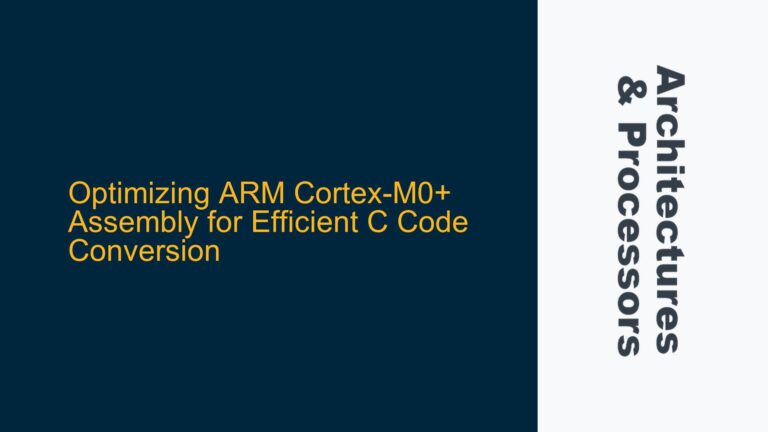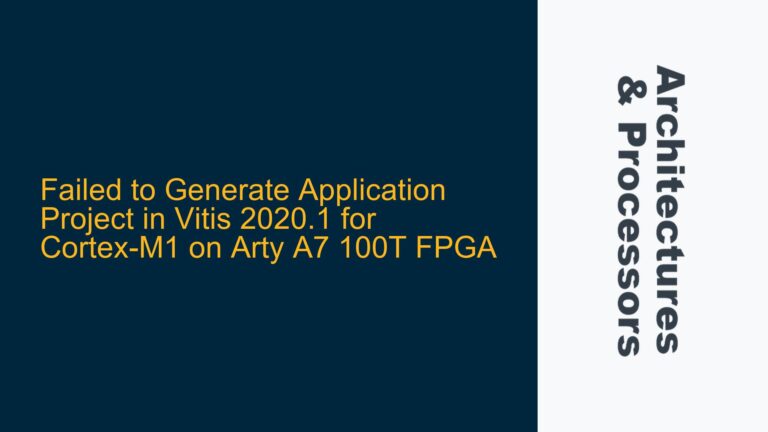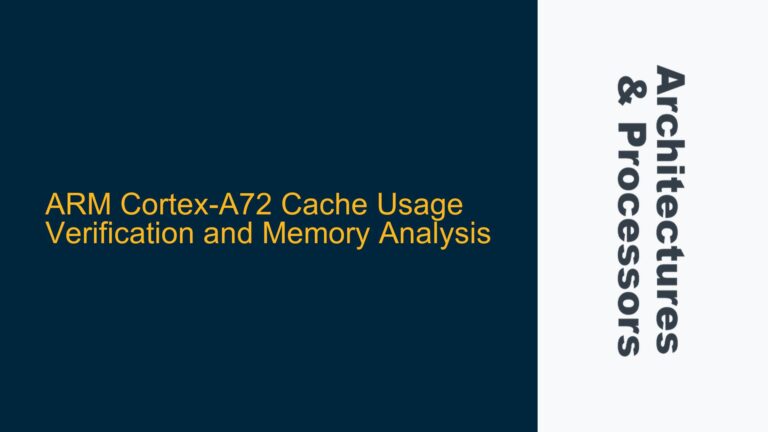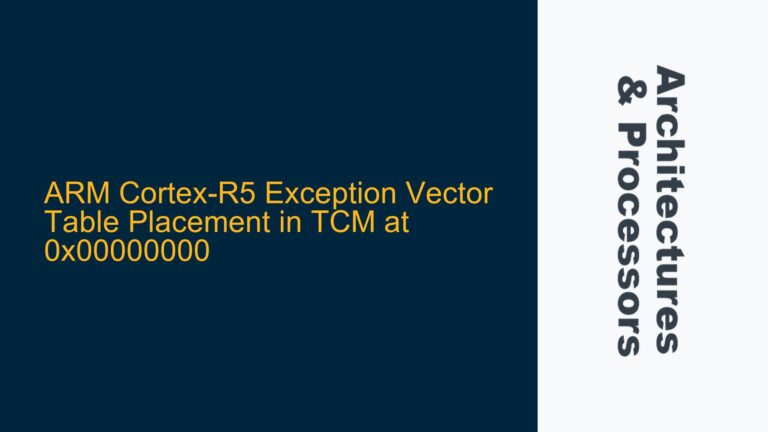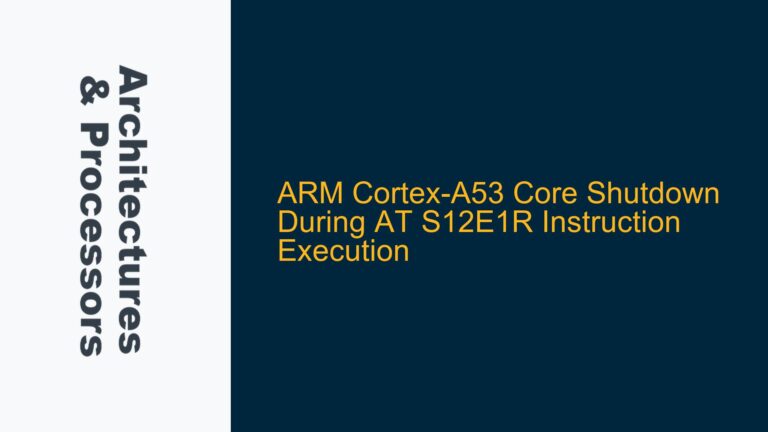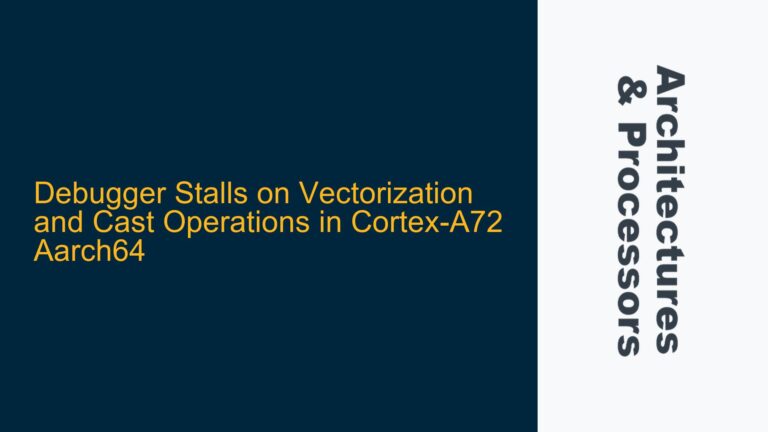ARM Special Register Access Monitoring Limitations
The ability to monitor access to special registers in ARM architectures, particularly in the context of debugging and performance analysis, presents a unique set of challenges. Special registers, such as SCR_EL3 in the ARMv8-A architecture, are crucial for controlling system behavior, security states, and exception handling. However, unlike general-purpose registers or memory locations, these special registers cannot be directly monitored using standard watchpoint mechanisms in hardware debugging environments.
The ARM architecture implements special registers as part of the system control coprocessor, and their access is tightly controlled through specific instructions like MRS (Move to Register from System register) and MSR (Move to System register from Register). These instructions are used to read from and write to special registers, respectively. The debug architecture in ARM processors, including the Debug Watchpoint and Trace (DWT) unit, is designed to monitor memory addresses rather than register accesses. This design limitation stems from the fact that special registers do not have memory-mapped addresses and are accessed through dedicated instructions.
In simulation environments, such as ARM Fast Models or other virtual platforms, it is sometimes possible to set breakpoints on special register accesses because these environments can intercept and monitor all instructions being executed. However, when working with physical hardware targets, the debug logic does not provide direct support for monitoring special register accesses. This limitation can make it difficult to debug issues related to special register usage, such as incorrect configuration of security states or improper handling of exceptions.
Debug Hardware Constraints and Instruction-Level Monitoring
The primary reason for the inability to set watchpoints on special registers in hardware debugging environments lies in the architecture of the ARM debug logic. The debug logic in ARM processors, including the CoreSight components, is designed to monitor memory transactions and specific events, such as breakpoints on instruction addresses. However, it does not have the capability to monitor the execution of specific instructions that access special registers.
The ARM architecture defines special registers as part of the system control coprocessor, and their access is controlled through the coprocessor interface. This interface is not exposed to the debug logic in a way that allows for monitoring of individual register accesses. Additionally, the debug logic operates at a lower level of abstraction than the instruction set architecture, focusing on memory transactions and execution flow rather than the specific instructions being executed.
One potential workaround is to use instruction breakpoints to monitor the execution of MRS and MSR instructions. However, this approach has limitations. First, it requires knowing the specific addresses where these instructions are executed, which may not always be feasible in complex codebases. Second, it does not provide information about which special register is being accessed, as the debug logic cannot decode the operand of the MRS or MSR instruction.
Another consideration is the performance impact of using instruction breakpoints. Setting breakpoints on all MRS and MSR instructions can significantly slow down the execution of the code, making it impractical for real-time debugging or performance analysis. Additionally, the debug logic may have a limited number of breakpoint resources, which can be quickly exhausted if trying to monitor a large number of instructions.
Implementing Instruction-Level Breakpoints and Custom Debugging Techniques
Given the limitations of the ARM debug logic, developers must rely on a combination of instruction-level breakpoints and custom debugging techniques to monitor access to special registers. One approach is to use the ARM Debugger (DS-5) to set breakpoints on the MRS and MSR instructions that access the specific special register of interest, such as SCR_EL3. This requires identifying the locations in the code where these instructions are used and setting breakpoints accordingly.
To implement this approach, developers can use the following steps:
-
Identify the Instructions: Locate all instances of
MRSandMSRinstructions in the code that access the special register of interest. This can be done using static analysis tools or by manually searching the codebase. -
Set Instruction Breakpoints: Use the ARM Debugger to set breakpoints on the identified instructions. This will halt the execution of the code whenever one of these instructions is executed, allowing the developer to inspect the state of the system at that point.
-
Inspect the State: When a breakpoint is hit, inspect the state of the system, including the value of the special register being accessed, the contents of other relevant registers, and the call stack. This information can help identify the cause of any issues related to the special register access.
-
Use Conditional Breakpoints: If the number of
MRSandMSRinstructions is large, consider using conditional breakpoints to limit the number of times the debugger halts execution. For example, a conditional breakpoint could be set to only trigger when the value being written to the special register meets certain criteria. -
Implement Custom Debugging Code: In some cases, it may be necessary to add custom debugging code to the application to log accesses to the special register. This can be done by inserting additional instructions around the
MRSandMSRinstructions to log the access to a memory buffer or output it to a debug console. -
Use Simulation Environments: If the issue can be reproduced in a simulation environment, consider using the simulation environment to monitor special register accesses. Simulation environments often provide more flexibility in terms of debugging capabilities, including the ability to set breakpoints on special register accesses.
-
Analyze the Results: After collecting data on special register accesses, analyze the results to identify any patterns or anomalies that could indicate the source of the issue. This may involve comparing the observed behavior with the expected behavior based on the system design and documentation.
By following these steps, developers can effectively monitor access to special registers in ARM architectures, even in the absence of direct hardware support for watchpoints on these registers. While this approach requires more effort than simply setting a watchpoint, it provides a viable solution for debugging issues related to special register usage.
In conclusion, while the ARM architecture does not support direct watchpoints on special registers, developers can use a combination of instruction-level breakpoints and custom debugging techniques to monitor access to these registers. By carefully identifying the relevant instructions, setting appropriate breakpoints, and analyzing the results, developers can gain valuable insights into the behavior of their systems and identify the root cause of any issues related to special register usage.

